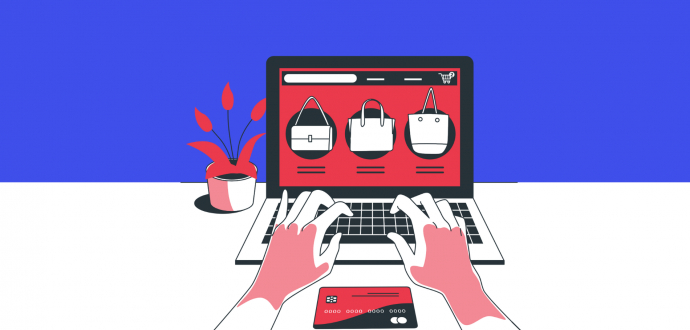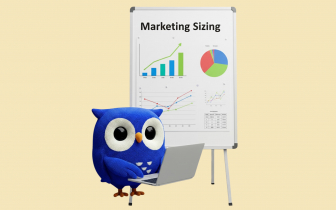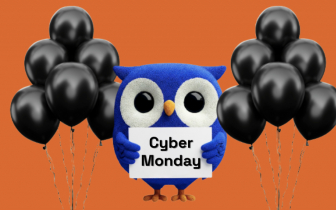Direct Distribution Channels: Do You Need a Middleman?

In any world where there is a person to provide the goods and services, there are people willing to get their hands on them. The only issue is how to deliver your products to them in the most efficient manner possible.
That’s where distribution channels come into play (stage, light, and action!).
But before you can really rule the stage in your niche, you need to know the fundamentals of how distribution channels work and understand whether indirect distribution is a good choice for you.
Luckily, we’ve already created guides on that, so you know where to find everything you need to know.
Now, the only thing left is to figure out what the direct distribution channel is all about. And this is exactly what we’ll be doing today. In this guide, we will take a closer look at how it works and weigh the pros and cons so you can make the right call
What does the direct channel of distribution mean?
A direct marketing channel refers to getting a product from a manufacturer to a consumer directly. It is exactly what it sounds like — your products and services are delivered to the end user without the help of any middleman like wholesalers, retailers, distributors, agents, etc.
Straightforward, right? Some people know it by another name — direct sales point.
The opposite of that is the indirect channel, where you have to team up with others along the delivery line — kind of like yin and yang.
Types to consider
Here's the thing about this distribution model – it comes in three different flavors. Let’s break them down:
Self-service, mobile apps & e-Commerce
Source: Temu
In this scenario, the customers come directly to your website to order. They don’t have to talk to any salesperson. They can simply click on what they like to get the product delivered right to their doorstep.
We see this model being used by Apple, Amway, Tesla, Walmart, and millions of other brands, really. A lot of subscription-based services also use this method as it is perfect for getting direct insights from their customers, which they can then turn into personalized shopping experiences.
Of course, using this type of channel means you really need to be good at using SEO and PPC to promote your products/services and drive traffic to your webpage.
In some cases, you may need to hire a guest posting service to help increase your DA/DR, rankings, and brand awareness and pull more organic traffic to your site.
Field sales
Source: HubSpot
If you have ever had someone walk up to your doorstep and offer you to buy products or encyclopedias directly from the production, chances are that they were using the field-based sales tactic.
Here, the company sends salespeople directly into the field, which could be at the airport, trade fairs, conferences, etc. Sometimes, a sales team can go directly to engage with prospects and leads to build the trust necessary to turn them into lifetime customers.
This type of direct distribution channel is very common in the real estate industry, insurance, B2B businesses, and niches elsewhere the products or services are worth $50,000+.
This is very understandable since most people won’t feel comfortable without talking to the business representative in person before parting with such amounts.
You wouldn’t want to buy a new house that costs millions of dollars without first having a face-to-face meeting or two with the parties involved, would you?
On the other hand, it also gives the business a chance to personalize its offer to each client. Win-win.
Phone, email & SM-based sales
Source: HubSpot
The idea of phone-based sales probably sounds old-fashioned, but some businesses still use it today.
At any rate, a lot of sales happen through emails, professional social media platforms like LinkedIn, and other SM channels like Instagram, Facebook, and so on. And guess what? It works wonders for up to 87% of sellers.
Source: LinkedIn
Thinking it only works for B2C businesses? Think again! 75% of B2B buyers turn to social media to make buying decisions. And among the younger generation, social media is quickly becoming the “go-to” option for shopping.
How can you tell which distribution model works best for your business?
Now that you know what a direct channel of distribution is, the next step is to figure out what option is best for you. You have to sit down and ask yourself the hard questions:
- How much are you willing to invest in your distribution channels?
- What are the strengths and weaknesses of each of these channels?
- Which one best matches your business model?
- Which of these matches your product type and your long-term business goals?
- What are your target audience preferences?
- What do you consider your lifetime value?
- What is your price point offering?
Keep in mind that even though the e-commerce option is the cheapest, it is also the most likely to require a ton of effort to bring the desired results.
This means it is great for snap businesses with small budgets, but they will need to ramp up their SEO skills if they're hoping to stand any chance of outranking the bigger, more established brands.
On the other hand, email and field sales channels are great for enterprises. Your team can easily address any concerns the prospects might have and provide one-on-one consultation sessions if needed.
Yet, the issue is that you need a pretty big check to actually cover all the expenses related to your field sales team. Of course, it doesn’t mean that you only have to target customers who are Fortune 500 companies, but you still have to do the math before getting into this.
Pros of direct distribution
What is one advantage of direct distribution channels? If we were to choose just one, it'd be more control. But there are definitely many more perks that go with it, like:
Get direct insights from customers
This may be one of the biggest perks of this tactic. It helps you connect better with your customers and improve the quality of service.
You can conduct surveys online or in-store or ask your clients to rate their experience with your service or products. Their responses will then provide the insights you need to improve their overall experience with your brand.
Direct insights from customers are important if you hope to last in the long term and build some form of loyalty with your buyers.
Keep major control
Direct channel marketing gives you complete control over how your product/service gets to the final customer. Since there are no intermediaries, you can decide:
- Who gets to market your products,
- What marketing campaigns to run,
- What the delivery process looks like,
- How the pricing should be,
- What experience your customers get with your team, and more.
This way, you can streamline your supply chain and ensure efficiency at every step of the way. Also, in the event of a negative PR, it’s easier for most companies to use the direct channel to do damage control.
Of course, you may still have to hire a PR agency to control the narrative and submit articles to news sites where your audience will be likely to see them.
Enjoy more flexibility
When you have full control of every stage of the distribution channel, it becomes easier for you to make changes when the market trends shift.
You don’t have to discuss it with any middleman or wait for their approval. You can call the shots directly. This lets you provide a consistent and exclusive experience across all channels of distribution.
More profits for your business
When businesses use middlemen, they get to share the logistics expense, which is nice. But they also get to share the profits. Is this still nice? Well…
When you use a direct channel, though, you don’t have any of these middlemen to worry about. Sure, you bear the costs all by yourself, but you get to keep the profits as well. This is especially important if you are in a niche market where commissions are on the high side.
Cons of direct distribution
Even with all the great benefits of direct channel distribution, you can still experience some setbacks. The downside of this tactic is that you:
Spend a lot more
You have to foot every single bill that has to do with direct distribution all by yourself. If you think a warehouse costs a lot, imagine having to pay for several warehouses in different parts of the world.
On top of that, you are also responsible for the logistics — from inventory and shipping to returns.
May take longer to penetrate the market
Often, people who go with indirect channels get to enjoy the expertise of the middlemen to help them penetrate new markets.
On top of that, they can already tap into their middlemen's existing markets.
It’s not the same for you since you are using the direct channel. In your case, your customers and sales depend on how visible your brand, services, and products are.
Three examples of direct distribution in play
Wondering what this type of distribution looks like in practice? Here are three famous examples to help you paint a picture:
Avon
Avon is one of the most easily recognizable beauty brands. Starting from 1886, when the founder went door to door to market his products himself, the company has a long reputation for using the direct sales method.
In its early stages, as business grew and demand went high, rather than selling through retail stores, the company signed on its own representatives. The idea was to get the products directly from Avon and then sell them to customers for a commission.
Today, the company has over 6 million representatives in more than 100 countries. These representatives earn commissions based on sales performance.
Nowadays, you can go directly to the website and order any of the wide selection of products available or buy from an Avon ambassador near you.
Also, you can become an ambassador (distributor) by signing up for the ambassador program on their website. This gives you the ability to earn a 25% commission on orders above $40 and exclusive discounts.
Tesla
Source: Tesla
You know Tesla, and chances are that maybe you’ve even wanted one (or own one already). But how does the company ensure that its vehicles get to the customers' driveways? It’s easy — by shipping the cars by themselves.
An interested buyer simply logs into the website and orders one of the cars listed. Prefer a more hands-on experience? You can also go to the physical stores located in several cities and get to test out what it feels like to get behind the Tesla wheel.
As you see, Tesla is a typical direct distribution example.
Source: FourWeekMBA
This distribution choice allows Tesla to maintain control over its brand marketing techniques and forge even tighter relationships with their customer bases.
Apple
Source: Apple
There are only a few companies as easily recognizable as Apple. From phones and laptops to earphones and watches — the company manufactures a variety of products and has a strong, loyal customer base ready to get their hands on the latest gadgets.
So, what distribution channel do they use to ensure their products reach the final user? They use both direct and indirect channels, but for this post, we will focus on the direct channel.
Source: Apple
Despite having partnerships with cellular networks and retailers, the company also has direct channels in the form of physical walk-in stores and its online platforms. Customers can get direct interaction with company representatives and give their feedback.
In turn, the company maintains consistency in its brand messaging,, which helps improve its brand recognition on a global scale.
Not to mention — their stores are promotional tools in themselves, thanks to their unique architecture and design. Isn’t this Singapore store simply on the next level?
Source: Apple
Conclusion
With us so far? If so, now, you can consider yourself quite the expert on how a direct channel of distribution works.
Getting the product/service to the customer in good shape and as fast as possible is a huge priority for any business. And by taking care of this by yourself, you can streamline this process, making it more hassle-free for you.
Since there are several options, it is best to carefully consider how different distribution models can work in your case.
Besides, keep in mind that you are also free to mix and match both direct and indirect distribution.
At the end of the day, as long as you can make your customer happy, you are doing great, no matter how you deal with this.







